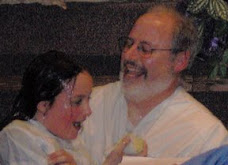Practically speaking, the installation service serves as a launching point for the pastor's new ministry. It conveys to the congregation and to those in the shadow of its ministry that an era is closing, and a new era is beginning. This can be important for churches dealing with conflict from a previous pastorate. The celebrative atmosphere and the required cooperation necessary to put on an installation service should energize the church membership so that they feel good about gathering together for worship in the coming services.
Here are some ideas.
- Much advance promotional work is needed. The whole church membership should receive special invitations. This especially includes wayward or absentee members. An invitation list should be developed and expanded as widely as possible. The church may well take out advertizing in the local newspaper and radio stations. In some communities, flyers might be handed out door-to-door.
- Baptists participate in processions as an act of worship, but not often. An installation service may invite a processional, since there are usually visiting ministers in attendance. I like to include children and youth into these acts of worship, and so I usually invite a child to lead the processional, carrying an appropriate size cross to represent Christ at the head of the processional. I might even add a child to carry in the altar Bible.
- Because of their tendency to erode distinctions between clergy and laity, Baptists are not typically fond of vestments. The installation service, however, might be a time when clerical robes might serve to solemnify the occasion; women don't normally wear bridal gowns and veils, but do so for the one special occasion.
- Installation services call for all kinds of special music, and the church may well invite special musicians. Music tending toward the classical is especially appropriate for the processional, if there is a processional.
- The installation service is a good time to emphasize the community relationships of the church with its affiliated and neighboring civic organizations. Leaders of these organizations may well be invited to bring short (2 minute) greetings and well-wishes to the congregation on behalf of their organizations. These would include representatives from the local church association, the state convention, other denominational representatives, local colleges and universities, and city and state such as the mayor or congressperson. Invited guests who cannot come may send written greetings and well-wishes which might be read to the congregation.
- The new pastor should include people who have a deep connection with him or her into various parts of the service. In particular, the guest speaker to preach the installation sermon should be a significant mentor. Likewise, someone near and dear to the new pastor should render the installation prayer, and a vocalist who is a long friend to the new pastor might sing a meaningful song.
- Participation in the installation, then, is determined by practicality and intimacy. That is, there is a dignitary class of participants (representatives from affiliated organizations and from the civic arena) and a class of participants who participate simply because they are dearly loved by the new pastor.
- The installation service normally culminates in the installation prayer, which is usually done in the context of laying on of hands. Laying on of hands is an ancient biblical custom in which church leaders surround the individual and pray over him or her, with hand on the individual's head or shoulder. The person delegated to render the installation prayer should be someone who can pray with fervor and knows what it means to cry mightily to God.
- The installation service usually involves food and fellowship afterward. New pastors may also help people get to know them by setting up a display of personal memorabilia which showcase the pastor's life, ministry, and various projects and achievements. In some cases, the pastor may wish to give a short presentation on a much loved project.









